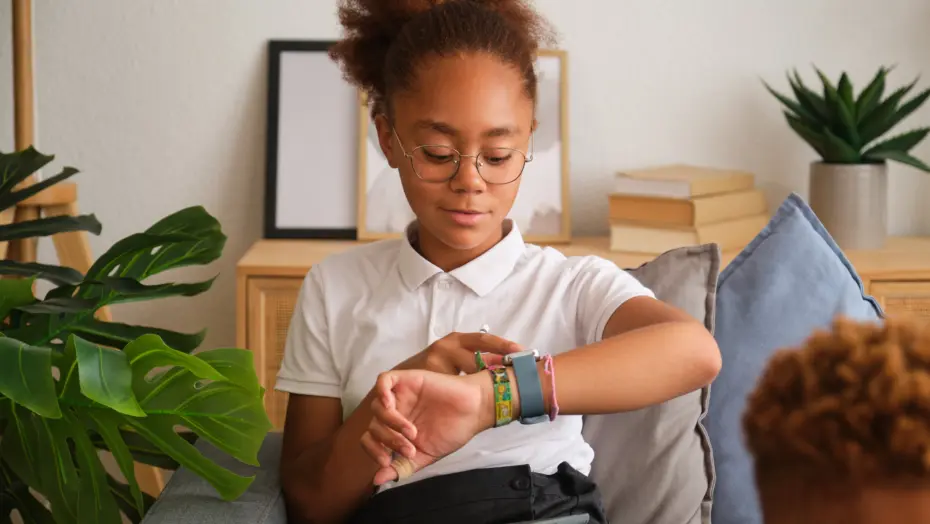Smartphones let us call, text, access the internet, play games and so much more, all in the palm of our hand. However, for older children and “tweens,” this technology can sometimes hurt more than it helps. While they offer incredible resources for learning and staying connected, they also pose potential risks.
The downsides of smartphones:
- Screen addiction
It’s no secret that smartphones can be addictive. The constant stream of notifications and the endless scroll of social media can make it hard for anyone to put their phone down. Studies have shown that too much screen time can lead to problems like poor sleep, increased stress levels and even lower performance at school. - Cyberbullying
Smartphones can also open the door to cyberbullying. Because everyone is connected all the time, it’s easier for bullies to target their victims online. This can lead to serious emotional stress for kids. - Privacy concerns
Children may not always understand the importance of privacy settings and how much personal information shouldn’t be shared online. Smartphones, with their easy access to social media and various websites, can unknowingly expose them to privacy risks. - Distraction from real life
With a smartphone in hand, kids might find themselves more focused on what’s happening in the digital world than in the real world around them. This can affect their ability to interact with others face-to-face and enjoy real-life experiences. - Misinformation
Access to smartphones can also expose children to an endless scroll of misinformation, especially when it comes to medical or health advice on topics ranging from mental well-being to physical health.
Smart alternatives to smartphones:
- Smartwatches designed for kids
Smartwatches can be a nice alternative for kids. They often include features like calling and messaging, GPS tracking for safety and even fitness tracking. Since they’re worn on the wrist, they’re less likely to be lost or forgotten. - Tablets with parental controls
For kids who need access to the internet for homework or entertainment, tablets can be a good compromise. Many tablets offer robust parental controls that allow parents to limit screen time, block inappropriate content and monitor usage. This way, they can use the internet in a safer, more controlled environment. - Laptops with monitoring software
Similar to tablets, laptops can be equipped with monitoring software that helps keep younger users safe online. They’re ideal for schoolwork and can be configured to block certain websites and limit usage times. This helps ensure that children can learn to use the internet in a productive and safe way. - Basic cell phones
Basic cell phones offer simple call and text capabilities without the distractions of internet access. They’re great for kids to stay in touch without all the bells and whistles of a smartphone. Models like wireless flip phones are designed to be user-friendly and focus on the basics of communication.
Choosing the right alternative to a smartphone depends on what your child’s needs. If it’s primarily for staying in touch, a basic cell phone or a smartwatch might be the best option. If they need internet access for school, a tablet or laptop with parental controls could be the way to go.
It’s also important to have open conversations with your child about why you’re considering these alternatives. Discuss the potential risks of smartphones and the benefits of the option you’re considering together. It can be helpful to communicate that the goal isn’t to cut off communication, but to ensure that it happens in a healthy and safe way.
As your child reaches their teen years, this conversation can transition to discussing online safety and setting expectations for the responsibility of smartphone ownership. Communicating clear guidelines and establishing a values system together can help to ensure that your child has the tools they need to have a smartphone of their own and better manage their online presence into adolescence and early adulthood.
Remember, no device can substitute for open communication and guidance from parents and guardians. Encouraging responsible and mindful use of technology, regardless of the device, is key to helping kids navigate the digital world safely.

